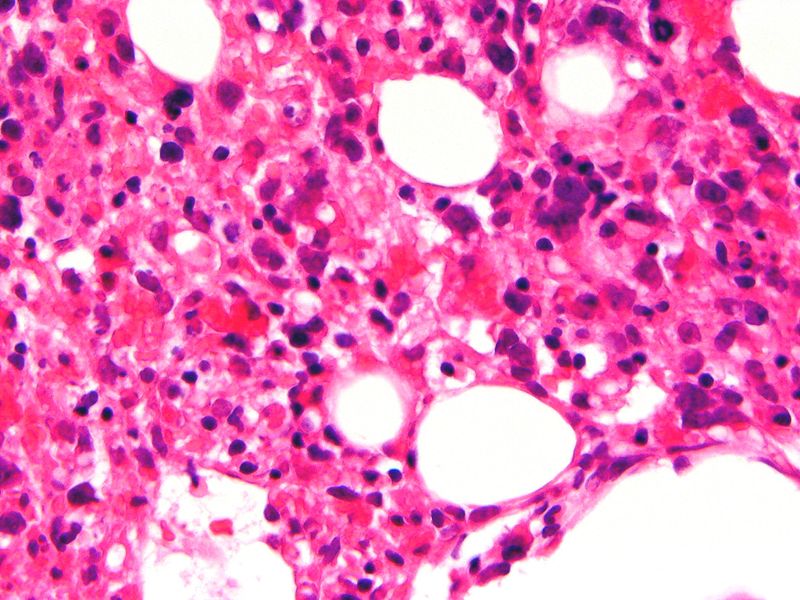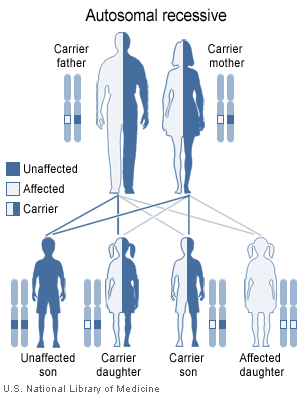Hemophagocytic lymphohistiocytosis
| Hemophagocytic lymphohistiocytosis | |
 | |
|---|---|
| Light microscopic image of bone marrow showing stromal macrophages containing numerous red blood cells in their cytoplasm | |
| ICD-10 | D76.1 |
| ICD-9 | 288.4 |
| OMIM | 267700 603552 |
| DiseasesDB | 31418 |
| MeSH | D051359 |
Editor-In-Chief: C. Michael Gibson, M.S., M.D. [1]; Associate Editor(s)-in-Chief: Raviteja Guddeti, M.B.B.S. [2]
Synonyms and keywords: Hemophagocytic syndrome, Familial histiocytic reticulosis, Hemophagocytic lymphohistiocytosis - familial, Erythrophagocytic lymphohistiocytosis - familial, Familial haemophagocytic lymphohistiocytosis
Overview
Hemophagocytic lymphohistiocytosis (HLH)[1] is an uncommon hematologic disorder in which the immune system produces too many activated immune cells (lymphocytes) called T cells, natural killer cells, B cells, and macrophages (histiocytes). Excessive amounts of immune system proteins called cytokines are also produced.
Classification
HLH comprises
- Familial (primary) hemophagocytic lymphohistiocytosis (FHL)
- Secondary HLH (SHLH)
Familial forms
FHL, an autosomal recessive disorder, is invariably fatal when untreated. It is associated with defective triggering of apoptosis and reduced cytotoxic activity, resulting in a widespread accumulation of T lymphocytes and activated macrophages.
There are four types, and each is associated with a specific gene:

Pathophysiology
Excessive production of too many activated immune cells (lymphocytes) called T cells, natural killer cells, B cells, and macrophages (histiocytes) and cytokines by the immune system causes symptoms and damages liver and spleen and causes these organs to enlarge. Familial hemophagocytic lymphohistiocytosis also destroys blood-producing cells in the bone marrow, a process called hemophagocytosis. As a result, affected individuals have low numbers of red blood cells (anemia) and a reduction in the number of blood cells involved in clotting (platelets). A reduction in platelets may cause easy bruising and abnormal bleeding.
The brain may also be affected in familial hemophagocytic lymphohistiocytosis causing various symptoms and complications.
Diagnosis
History
Inquiry about family history may help diagnose the familial forms of Hemophagocytic lymphohistiocytosis.
Symptoms
- Fever
- Rash on the skin
- Abdominal pain
- Abnormal bleeding
- Infections [2]
References
- ↑ Fisman DN (2000). "Hemophagocytic syndromes and infection". Emerging Infect. Dis. 6 (6): 601–8. doi:10.3201/eid0606.000608. PMC 2640913. PMID 11076718.
- ↑ Fisman DN (2000). "Hemophagocytic syndromes and infection". Emerging Infect. Dis. 6 (6): 601–608. PMID 11076718.
External links
- http://www.hrtrust.org/library/HLHSymptomsSignsAndDiagnosis.html
- http://www.histio.org
- http://www.jonahchuang.com
- http://www.elyseyu.com
- http://www.ethanmichaelsmith.com
- http://www.savejonah.com
- ↑ Henter JI, Samuelsson-Horne A, Aricò M; et al. (2002). "Treatment of hemophagocytic lymphohistiocytosis with HLH-94 immunochemotherapy and bone marrow transplantation". Blood. 100 (7): 2367–2373. doi:10.1182/blood-2002-01-0172. PMID 12239144.